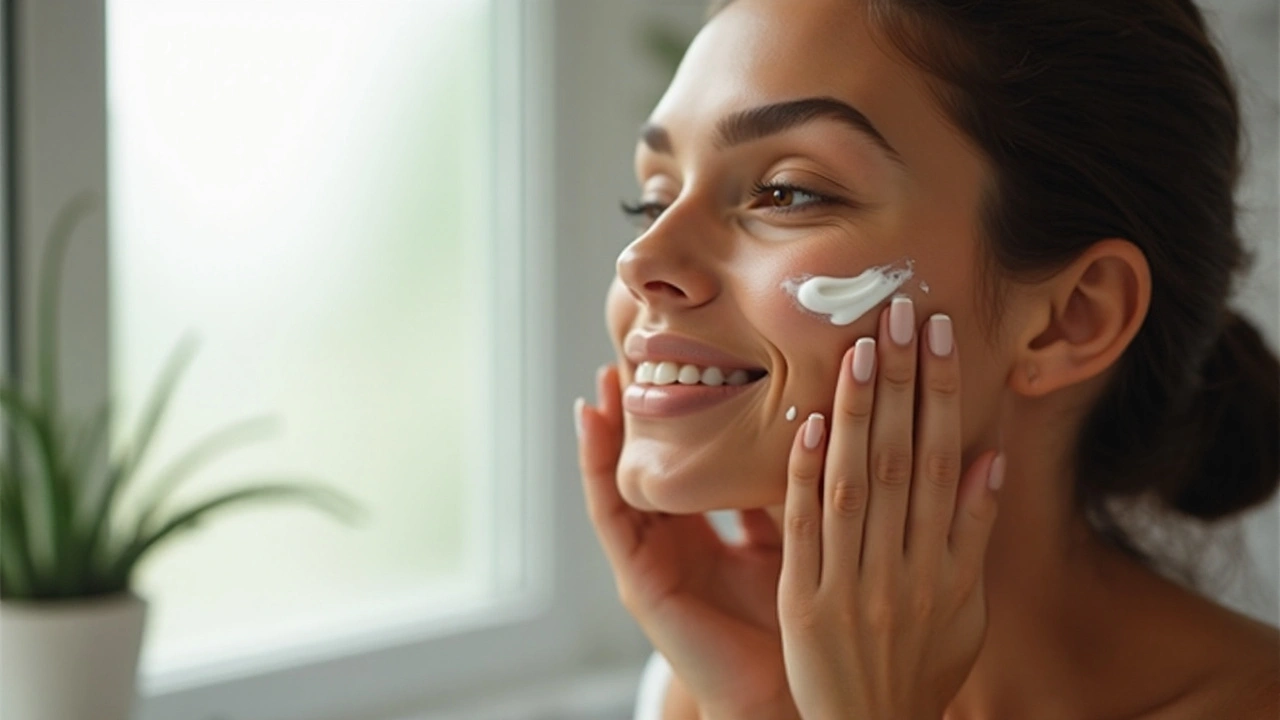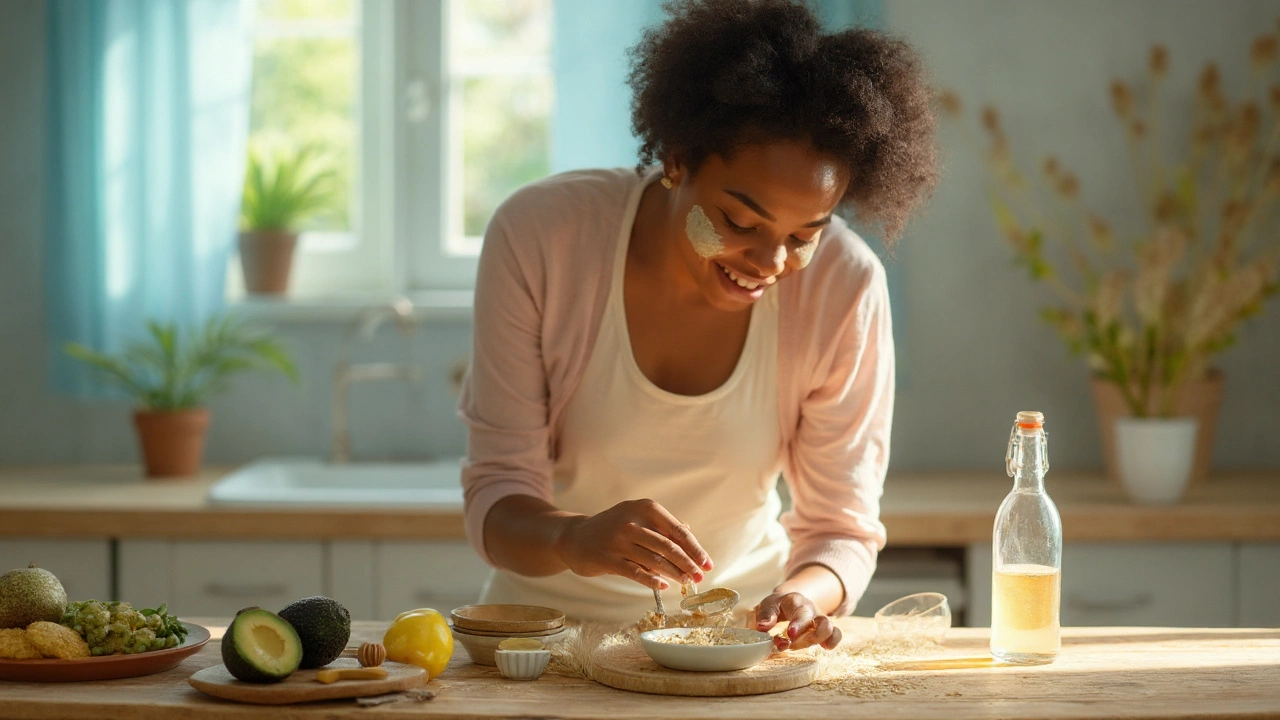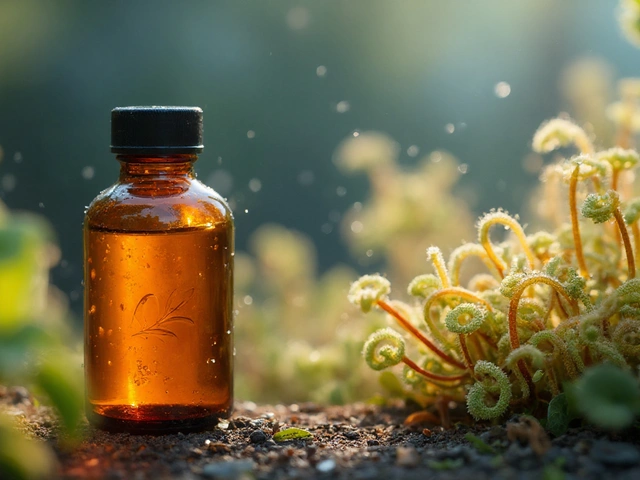
Facial Treatment for Chapped Skin is a targeted skin‑care approach that restores barrier function and deeply hydrates severely dry facial skin, characterized by the use of occlusive, humectant, and reparative ingredients. When the skin barrier is broken, moisture evaporates, leading to flaking, tightness, and even cracking. The right treatment can seal in water, replenish lost lipids, and calm inflammation within days.
Why Chapped Skin Happens
Chapped skin isn’t just winter‑time misery; it’s a symptom of a compromised stratum corneum. Low humidity, harsh cleansers, and frequent exfoliation strip away natural oils. Over‑washing, hot showers, and even certain medications can reduce ceramide production, making the skin leaky. When the barrier fails, transepidermal water loss spikes, and the skin feels rough, itchy, and looks flaky.
Key Ingredients That Actually Work
Before diving into specific products, understand the three families of actives that repair chapped skin:
- Occlusives - create a surface barrier to prevent water evaporation. Examples: petrolatum, mineral oil, dimethicone.
- Humectants - attract water from the atmosphere into the skin. Examples: hyaluronic acid, glycerin, urea.
- Barrier‑repair lipids - replenish the skin’s natural lipid matrix. Examples: ceramides, cholesterol, fatty acids, squalane.
When a treatment combines at least one from each category, you get a 3‑step hydration system that mimics a healthy skin barrier.
Top 7 Facial Treatments Proven for Chapped Skin
Below are the most effective options, arranged from clinical‑grade to easy‑at‑home solutions. Each entry includes the core ingredient, texture, and best‑use scenario.
- Hyaluronic Acid Serum is a lightweight humectant serum that can hold up to 1,000 times its weight in water, featuring a 1.5% low‑molecular‑weight HA blend. Apply on damp skin, then lock in with a moisturizer.
- Ceramide‑Rich Cream is a rich barrier‑repair cream containing a 3‑ceramide complex, cholesterol, and fatty acids. Its thick texture makes it perfect for night‑time or cold‑weather use.
- Oatmeal Mask is a soothing mask packed with colloidal oatmeal, colloidal zinc, and a touch of honey. It reduces itch and inflammation while providing a mild occlusive film.
- Petrolatum Ointment is a pure occlusive barrier that creates a waterproof seal over the skin surface. Use a thin layer on the most cracked areas before bedtime.
- Squalane Oil is a light, non‑comedogenic oil that mimics the skin’s natural lipids. It provides instant softness without feeling greasy.
- Aloe Vera Gel is a plant‑derived soothing gel rich in polysaccharides and vitaminE. Ideal for post‑shower application to calm heat‑induced dryness.
- Shea Butter Balm is a thick balm with 15% shea butter, tocopherol, and a dash of niacinamide. Best for very severe cracks on cheeks and jawline.
How to Layer These Treatments for Maximum Effect
Layering follows the classic “water‑light‑heavy” rule:
- Start with a gentle cleanser (pH5.5, no sulfates).
- Apply the Hyaluronic Acid Serum on damp skin to draw in moisture.
- Follow with a thin layer of Ceramide‑Rich Cream to seal the serum.
- If extra protection is needed, dab a small amount of Petrolatum Ointment on the most dry spots.
- Finish with Squalane Oil or Shea Butter Balm for overnight barrier reinforcement.
Morning routine can be trimmed to serum + light cream; night‑time benefits from the heavier occlusives.
Lifestyle Boosters That Complement Facial Treatments
Even the best creams won’t work if the environment pulls water away:
- Humidifier: Keep indoor humidity at 45‑55% during heating season. A 1‑gallon cool‑mist humidifier adds enough moisture to reduce transepidermal water loss by up to 30%.
- Water Intake: Aim for 2‑2.5L of water daily. Hydration from inside supports the skin’s natural hydration mechanisms.
- Diet: Foods rich in omega‑3 fatty acids (salmon, walnuts) and antioxidants (berries, leafy greens) improve lipid production and barrier repair.

DIY Remedies You Can Mix at Home
If you love a hands‑on approach, these two masks use ingredients already in most kitchens:
- Honey‑Oat Overnight Mask: Mix 1Tbsp raw honey with 2Tbsp finely ground oats and a splash of warm water. Apply after cleansing, leave on for 30minutes, rinse with lukewarm water.
- Aloe‑Cucumber Soother: Blend half a cucumber with 2Tbsp aloe vera gel and a pinch of chamomile tea powder. Use as a calming splash after shower.
Both masks supply humectants (honey, aloe) and occlusives (oats) without irritating ingredients.
Choosing the Right Routine - Quick Comparison
| Product | Key Ingredient | Texture | Ideal Use |
|---|---|---|---|
| Hyaluronic Acid Serum | Low‑MW HA (1.5%) | Light gel | Morning + post‑wash |
| Ceramide‑Rich Cream | Three‑ceramide complex | Thick cream | Nighttime barrier repair |
| Squalane Oil | Vegetable‑derived squalane | Silky oil | Finishing step, any time |
| Petrolatum Ointment | Pure petrolatum | Heavy occlusive | Severe cracks, overnight |
Pick a combination that covers humectant, lipid, and occlusive needs. For most people, the serum‑cream‑oil trio works daily, while adding petrolatum on bad nights provides extra relief.
Common Mistakes to Avoid
- Over‑exfoliating: Scrubbing removes lipids and makes chapping worse. Limit physical exfoliation to once a week, and use enzyme‑based options if needed.
- Choosing “oil‑free” labels blindly: Many oil‑free formulas lack occlusives and leave the skin vulnerable.
- Skipping the seal: Applying a humectant without a barrier allows water to evaporate back into the air.
- Using fragrance‑heavy products: Fragrance can irritate already compromised skin and prolong redness.
Next Steps - Building Your Personal Rescue Kit
Gather the essentials:
- Gentle cleanser (pH5.5, sulfate‑free).
- Hyaluronic Acid Serum (1%‑2% concentration).
- Ceramide‑Rich Cream with at least three ceramides.
- Squalane Oil or Shea Butter Balm for night‑time seal.
- Petrolatum Ointment for flare‑ups.
- Humidifier for dry indoor air.
Follow the layering routine, stay hydrated, and adjust based on how your skin feels. Most people report noticeable softening within 3‑5days and full barrier restoration in two weeks.
Frequently Asked Questions
Can I use a regular moisturizer instead of a ceramide‑rich cream?
A standard moisturizer may provide temporary relief, but without ceramides it won’t replenish the lipid matrix that the skin lost. For chapped skin, look for at least three ceramides, cholesterol, and fatty acids to rebuild the barrier.
Is petroleum jelly safe for acne‑prone skin?
Petrolatum is non‑comedogenic, meaning it won’t block pores. It sits on top of the skin and doesn’t interact with sebaceous glands, so it’s safe for acne‑prone skin when used only on dry patches.
How often should I apply a hyaluronic acid serum?
Apply twice daily-once after cleansing in the morning and again at night before your cream. The key is to use it on slightly damp skin so the HA can pull water into the outer layer.
Do I need a humidifier if I live in a dry climate?
Yes. Maintaining indoor humidity at 45‑55% reduces transepidermal water loss by up to one‑third, which speeds up barrier repair and makes topical treatments more effective.
Can I mix a DIY honey‑oat mask with my regular moisturizer?
After rinsing the mask, you can follow up with your regular moisturizer. The mask supplies humectants and mild occlusives, while the moisturizer locks everything in for longer lasting hydration.
Is squalane better than mineral oil for dry skin?
Squalane mimics the skin’s natural lipids, is lightweight, and has antioxidant properties, making it more skin‑friendly than mineral oil, which can feel heavier and sometimes leaves a greasy residue.




Xavier Hernandez
September 25, 2025When you skimp on your skin's defense, you’re basically handing the elements a free pass to wreak havoc, and that is simply unforgivable.
We live in a world where convenience often trumps conscience, but your skin deserves better than a half‑hearted slather of generic cream.
The barrier is the frontline, a sacred wall that keeps the moisture in and the irritants out; treat it with the reverence it commands.
Occlusives like petrolatum are the knights in shining armor, sealing in hydration with a ferocity that should be celebrated.
Humectants such as hyaluronic acid draw water like a magnet, and they deserve a place of honor in any regimen.
Barrier‑repair lipids-ceramides, cholesterol, fatty acids-are the architects rebuilding the fortress after an assault.
If you neglect even one of these pillars, you’re setting yourself up for a rebellion of flakiness and tightness.
Layering isn’t just a trendy buzzword; it’s a strategic deployment of resources, akin to a well‑orchestrated battle plan.
Start with a gentle cleanser to avoid further compromising the stratum corneum, then unleash the serum on damp skin for maximum draw.
Follow with a ceramide‑rich cream that acts as a sturdy wall, sealing in the serum’s bounty.
If the terrain is especially hostile, a dab of petrolatum acts as a weather‑proof tarp over the most cracked battlegrounds.
Finishing with squalane oil or shea butter provides a smooth, non‑greasy finish that reinforces the barrier overnight.
Don’t forget the environmental allies: a humidifier and adequate water intake are like reinforcements that keep the enemy at bay.
Dietary omega‑3s and antioxidants act as the supply lines, delivering essential nutrients for lipid synthesis.
When you respect the science and honor the ingredients, you’ll witness a dramatic transformation in just a few days, and that, my friends, is the triumph of disciplined skin care.
Zach Yeager
September 25, 2025America built this country on hard work and proper skin care I think you need to respect the basics and stop wasting money on fancy stuff
Angel Gallegos
September 25, 2025Honestly, the article reads like a corporate brochure written by someone who thinks "ceramide" is a brand of artisanal cheese.
While the science is solid, the prose pretends to be avant‑garde but ends up sounding like a pretentious lecture in a boutique spa.
The layering steps are correct, yet the tone is needlessly verbose for a topic that could be summed up in three bullet points.
Also, the claim that “most people report noticeable softening within 3‑5 days” lacks citation, which is a glaring omission for an otherwise detailed guide.
Overall, the content is useful if you strip away the theatrical flair.
ANTHONY COOK
September 25, 2025Yo, the whole barrier‑repair thing is legit 👍
But let’s be real, if you’re not using a humidifier you’re basically fighting a losing battle – the air sucks the moisture right out of your face.
Petrolatum is the unsung hero, and people love to hate it without even trying it first.
Bottom line: keep it simple, stay consistent, and your skin will thank you. 😎
Sarah Aderholdt
September 25, 2025It's essential to understand that everyone's skin has unique thresholds, so personalizing the routine is key.
Phoebe Chico
September 25, 2025Imagine your skin as a garden, each ingredient a seed of renewal-if you water with hyaluronic acid and fertilize with ceramides, the bloom is inevitable.
Embrace the ritual, and let the layers be the verses of a poem praising self‑care.
Larry Douglas
September 25, 2025The guide covers the basics quite comprehensively, describing the three core categories of actives-occlusives, humectants, and barrier‑repair lipids.
It correctly emphasizes the “water‑light‑heavy” layering principle, which aligns with dermatological recommendations.
However, the omission of pH‑balanced toners could be addressed, as they help pre‑condition the skin for optimal absorption.
Overall, the article serves as a solid reference for both novices and seasoned skincare enthusiasts.
Michael Stevens
September 25, 2025Great rundown! I’ve found that applying the hyaluronic serum right after a lukewarm shower really boosts its efficiency.
Keep sharing these helpful tips, they make a difference for a lot of folks.
Ann Campanella
September 25, 2025Skip the fancy stuff, just use a good ointment.
Desiree Tan
September 25, 2025Listen, the key is consistency-apply the serum and cream twice daily without missing a beat.
When you combine that with a humidifier at night, you’ll notice the barrier tightening up in a week.
Don’t get discouraged if you see a little flakiness early on; it’s just the old skin shedding.
Justyne Walsh
September 25, 2025Oh sure, because the world’s biggest crisis right now is whether we use petroleum jelly or not-how very noble of us to argue over a humble ointment.
If only we spent half the energy on real issues instead of polishing our skin, perhaps humanity would actually progress.
Callum Smyth
September 25, 2025While the debate can get heated, at the end of the day we all share the same goal: healthier skin.
Let’s keep the conversation constructive and focus on what works for each individual.
Xing yu Tao
September 25, 2025In summation, the integration of occlusive agents, humectants, and lipid replenishment constitutes a comprehensive protocol for the remediation of chapped dermal tissue.
Adherence to such a regimen, complemented by environmental modulation, yields optimal barrier restoration.